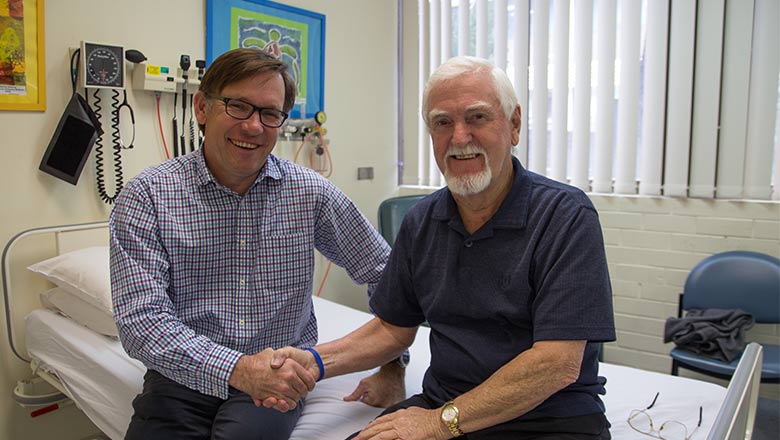Search

News & Events
Vaccine trial aims to curb ‘superbug’Sarah Le Roi knows well how debilitating Clostridium difficile infection (CDI) can be. She was struck down with the 'superbug' while on holiday in the US.
News & Events
Wesfarmers Centre of Vaccine and Infectious Diseases Research Seminar Series 2014Wesfarmers Centre of Vaccine and Infectious Diseases Research Seminar Series 2014.Genetic and functional studies of leishmaniasis: understanding the role of HLA
News & Events
Infectious Disease & Vaccination Public SeminarHear the facts about vaccination and infectious disease from some of Australia's leading experts: Professor Jonathan Carapetis, Dr Peter Richmond

News & Events
WANTED: 'Flu BustersHundreds of healthy volunteers are needed in Perth to test the effectiveness of a current 'flu vaccine.
Research
Evaluation of impact of 23 valent pneumococcal polysaccharide vaccine following 7 valent pneumococcalThe impact of the 23vPPV booster on IPD incidence among Australian Indigenous children is unclear from regional reports of small case numbers.
Research
A randomized phase I study of the safety and immunogenicityIn this study of healthy adults aged 50-85 and 18-24 years, SA3Ag elicited a rapid and robust immune response and was well tolerated, with no notable safety...
Research
Antibody persistence in Australian adolescents following meningococcal C conjugate vaccinationIn Australia, following the introduction of serogroup C meningococcal (MenC) conjugate vaccine for toddlers and catch-up immunization through adolescence,...
Research
Immune responses to a recombinant, four-component, meningococcal serogroup B vaccine (4CMenB) in adolescentsThis trial evaluated the lot consistency, early immune responses and safety of the vaccine against serogroup B Neisseria meningitidis (4CMenB) - in 11 to 17...
Research
Comparison of text-messaging to voice telephone interviews for active surveillance of adverse events following immunisation.This study was designed to compare data collected via SMS and telephone for the purposes of monitoring vaccine safety.
Research
Caregiver’s attitudes, beliefs, and experiences for influenza vaccination in Australian children with medical comorbiditiesInfluenza vaccination recommendation by children’s hospital physicians and previous vaccine receipt in hospital was associated with vaccine uptake
